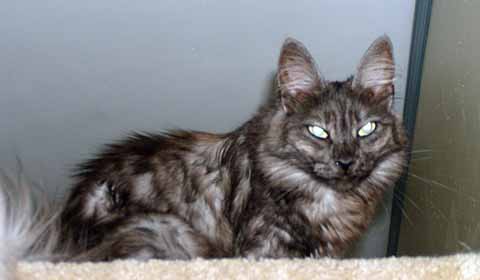 Never
miss a chance to show your cat.....
Never
miss a chance to show your cat.....Ankara
Our last stop on this road trip before returning to Istanbul was Ankara. This city is the Capital of Turkey and Ankara is generally considered a more "formal" city because of the parliament and heads of state bureaus residing here - people here can be clearly seen as government workers, professors and students, as opposed to the more open, casual Istanbul.
The region's history dates back to the Bronze Age; Hatti, which was succeeded in the 2nd millennium BC by the Hittites, then the Phrygians (10th century BC); Lydians and Persians followed. After these came the Galatians, a Celtic race who were the first to make Ankara their capital (3rd century BC). It was then known as Ancyra, meaning anchor. The town subsequently fell to the Romans, Byzantines, and Seljuks under ruler Alparslan in 1073, and then to the Ottomans under Sultan Yildirim Beyazit in 1402, who remained in control until the First World War.
The city, once an important trading center on the Silk Road Caravan route to the east, had declined in importance by the 19th century. It became an important center again when Kemal Ataturk chose it as the base from which to direct the War of Liberation. In consequence of its role in the war and its strategic position, it was declared as the capital of the new Turkish Republic on 13th of October, 1923.
The city was famous for its long-haired Angora goat, its prized wool (mohair), and an unique breed of cat - a very special cat - the Turkish Angora. I is reported that only four of the breed survived in Ankara following the War of Independence. We have one of the relatives of those four; a Turkish Angora show cat, Sadie, as seen below.
 Never
miss a chance to show your cat.....
Never
miss a chance to show your cat.....
The primary reason for stopping in Ankara was to view the Mausoleum of Mustafa Kemal Pasha Atatürk (1881-1938), the founder of the Turkish Republic and its first President. Atatürk is seen as a combination of the United State's Washington, Jefferson, Lincoln, and Ben Franklin - in my view. In fact, I can think of no American leader who has the universal status and standing as has Atatürk in the eyes of the Turkish citizens.
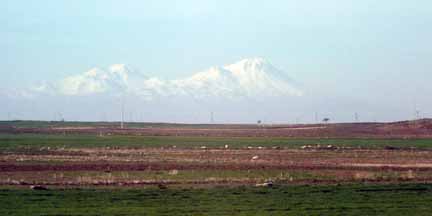
Leaving the plateau and the volcanoes behind
Entering Ankara 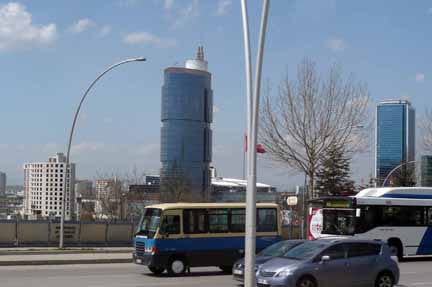
 Views
of the city
Views
of the city 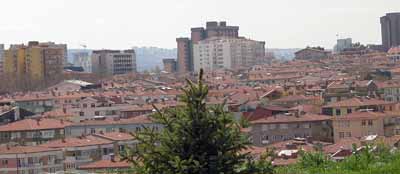

Ataturk's Mausoleum in the distance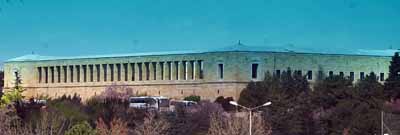 and the flag flying on the property
and the flag flying on the property
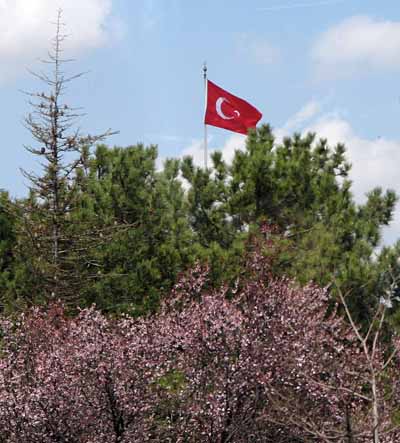

As seen on the hill top and as we park the bus
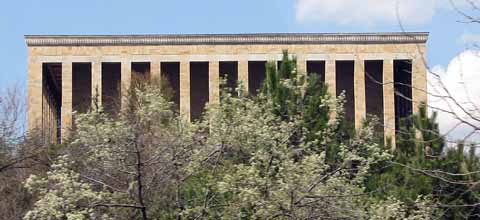

Turkey in flowers
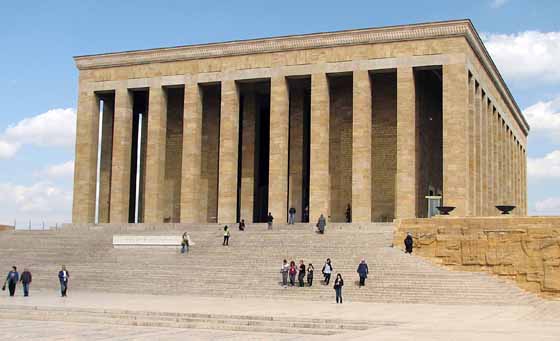
The impressive front view and the sculptured walls on either side
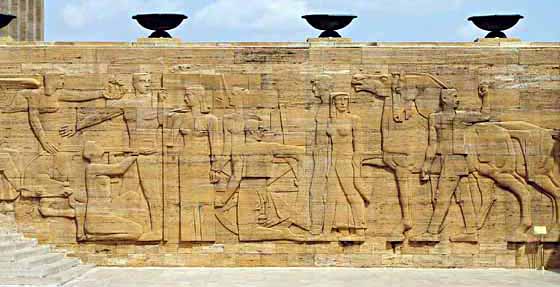
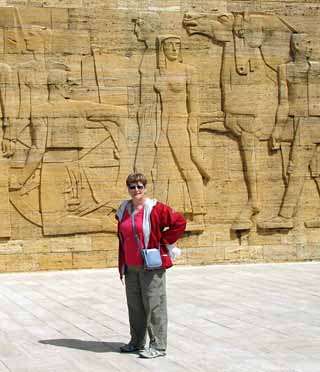 Jackie in front
of one of the walls
Jackie in front
of one of the walls
It appears each branch of the military was represented on-site - the
soldier on the right end inspected each guard and oversaw the change of the guard
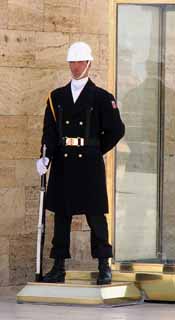

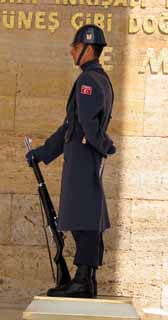

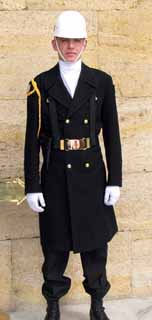
As as we were leaving a group of what appears to be Navel Cadets started to assemble in formation, with a female officer in charge. There were three not in uniform and they were carefully sequestered well within the formation and out of sight.

Ataturk's Mausoleum's main building has two floors and two master halls to each side. The actual crypt is well below the main floor and one cannot visit on that floor. A visitor can only see the crypt on television monitors.
The main floor is astounding. Below one can see different views of portions of the walls and ceilings. Everything appears to have beautiful mosaics; ceiling and walls.

A view across the hall to the main doors
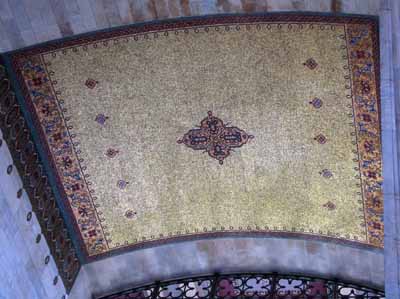 Mosaics
- ceiling in the main hall
Mosaics
- ceiling in the main hall
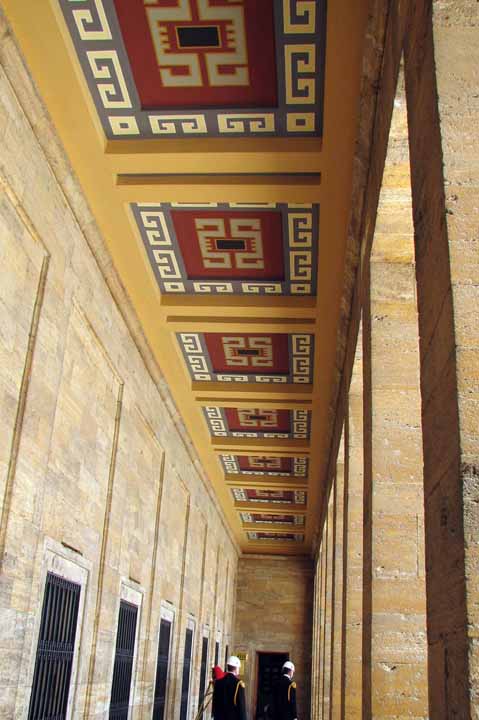
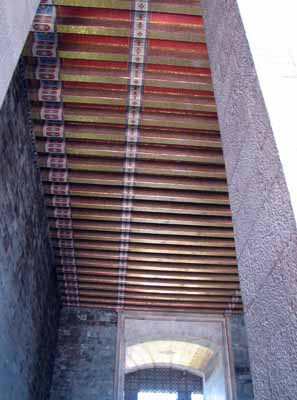
Views on the ceilings on the open corridors on each side of the mail hall

One of the mosaics on the walls
With a more detailed view to the right 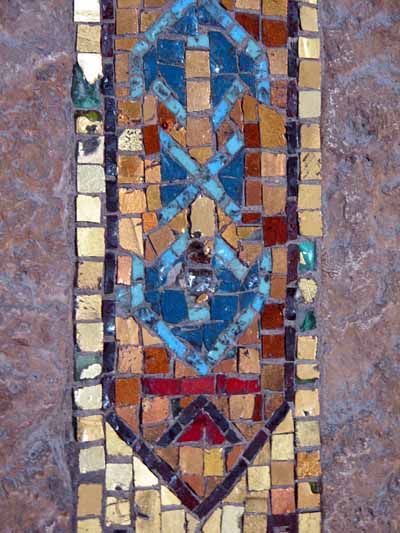
Ataturk is known for many things, and among them quotations. I've attempted to capture several of the plaques with quotations, but I fear you'll have difficulty reading them - a shame.
An overview of the museum
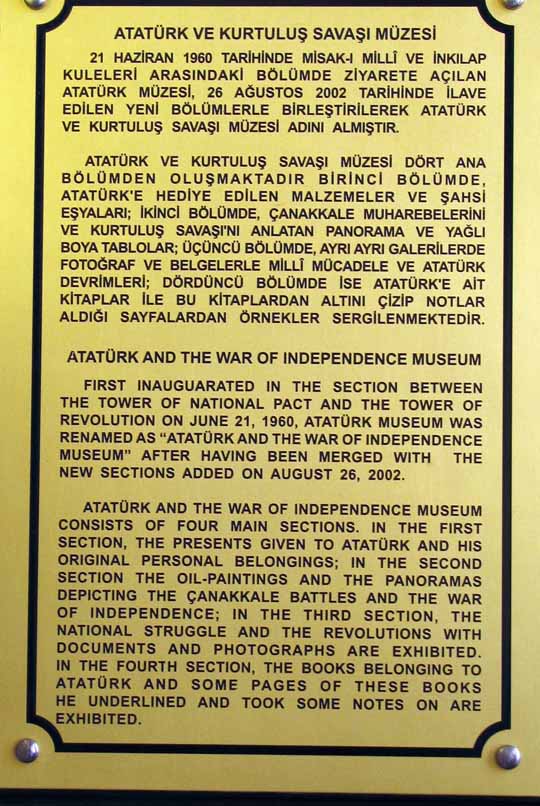
Some quotations

His last message to the Army
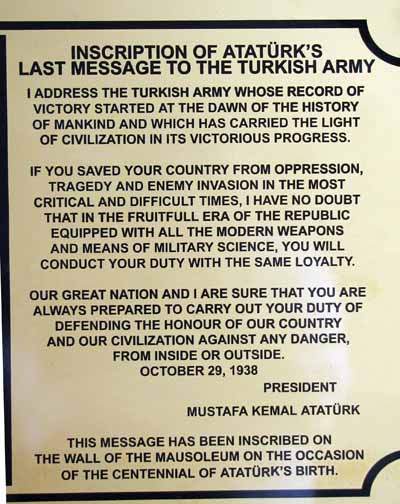
In front of the Mausoleum there is a large open space
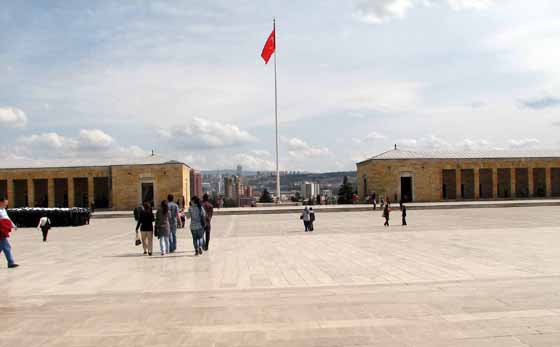
To the side the is a long marbled walkway, lined on each side by lions
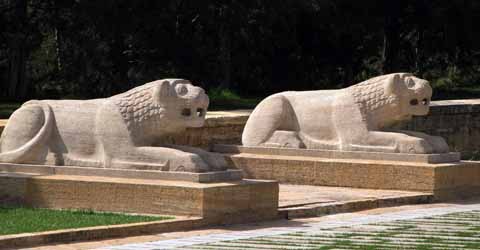
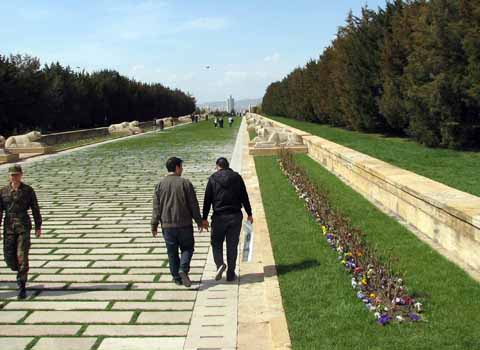
At the far end there are statues representing the Turkish people at Ataturk's time of war and victory. On the left valiant women and to the right the men.
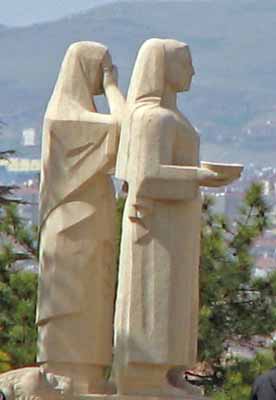

And tired tourists ready to leave for the hotel and return to Istanbul the next day.
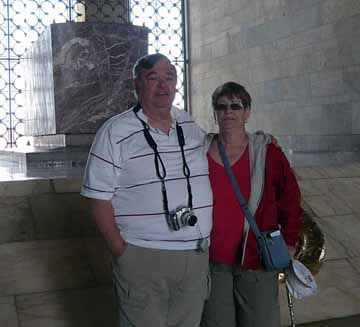
And then - After returning to the hotel

(the view from our hotel room)
Several of us decided to take our lives in our hands and cross the street seen in the lower left corner. Turkish drivers are not even close to the maniacal levels in almost every country we've been in ( and Washington DC), but they don't care to stop for pedestrians. After visiting a department store, where a young man who speaks perhaps 10 words in English, asked if we were enjoying his country and introduced us to his darling two year old daughter.
We the walked the street hidden behind he building on the lower left to find a place to eat. After walking up and down for 30 minutes Rosa took charge and we went into this small bakery/restaurant. The menus were in Turkish, the signage was in Turkish and both waiters spoke no English. He obtained help from the cashier - no English. They obtained help from the manger - little to no English. There was a great deal of pointing and as often the case when one is not understood, an increase in volume is thought to make up for language difficulties. We were saved by a student from one of the many colleges and institutes who did speak very rudimentary English. After much pointing, head shaking and gesturing we all had ordered.
Just as the smoke settled, an other couple from the tour walked in and asked if they could join us. The ordering, pointing, shouting and gesturing started all over again! I wish I had a picture of the waiter, the manager, the cashier, the student, and one or two additional customers gathered around this couple. All-in-all we roared with laughter the whole time (all of us; we tourists and all our helpers) - and - we had a great meal!
After the meal we were walking back to the hotel. We had noticed a man selling what appears to be boiled corn kernels. He would place a scoop or two in a paper cup and then, at the customer's direction pour one or more of about six different sauces over them. Although we has seen corn on the cob sold on the street often enough, this was new.
So on the way back, we again watched the street vendor and kind'a dared each other to get some - one Lira. As we were debating a young man walked up, ordered some corn and asked, in perfect English, if he could help us. It turns out he was originally from Ankara, but had been in the US (I can't for the life of me remember where) for several years and had returned for a new job. In the end, we ended up with the corn - each of us taking a spoonful at a time and passing it to the next person. Just another example of how thoughtful and pleasant the Turkish people were to us.